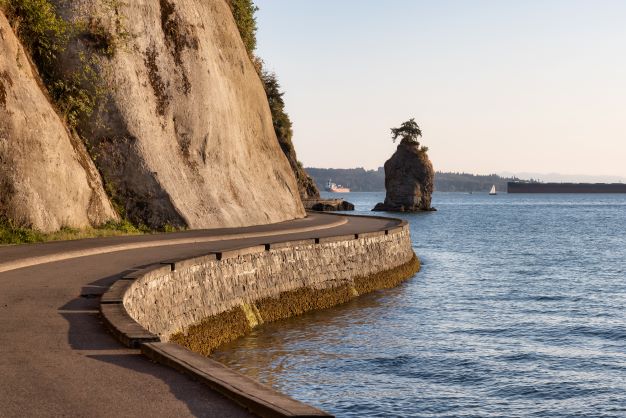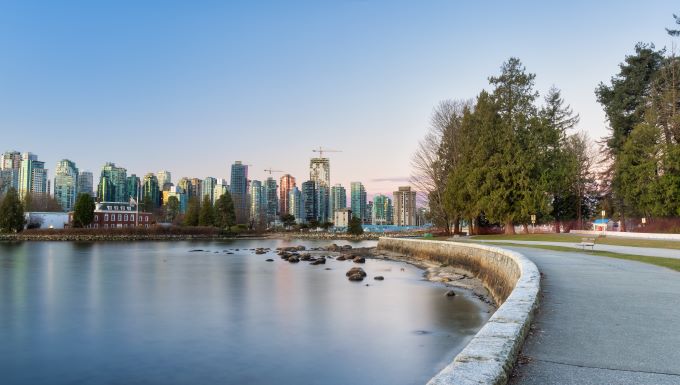It is important to choose the right material when building a seawall. This will affect the cost and longevity of your property.
Backfilling material must protect your property from erosion. The best material for your shoreline depends on its incline, soil type, currents and other factors.
Crushed Concrete
Concrete is safe and economical when it comes down to the best material for backfilling a seawall. Concrete is also attractive and increases a property’s value. It is important to remember that a seawall can only be as strong as its weakest points. So it’s vital to check the integrity of the wall regularly and replace damaged panels or sections.
Another type of backfill for seawalls is outcropping, which uses irregular stones to create a more natural-looking shoreline. It can be used with many different styles and designs. It’s also environmentally-friendly and a great alternative to a steel seawall.
Crushed concrete can be used as a construction material. It’s often recycled from areas where buildings have been destroyed or demolished. It is broken down into smaller pieces which can be used for landscaping or pathways.
The recycling process starts by breaking down any existing concrete structures, like building slabs and curbs. Typically, industrial crushing equipment is used to break down these structures into larger chunks that are then fed into impactors and re-screened to remove any dirt or other particles before being broken up again into small pieces.
This process can either be onsite or at a processing plant, where large slabs are transported to the plant and crushed by a machine that breaks them into small pieces that can then be used in landscaping or other applications. The recycling process helps save space in landfills and reduces the amount of waste that is produced during demolition projects.
It’s also better for the environment than using new concrete, since it saves resources. It takes less energy for concrete to be recycled than it does to mine the raw materials from ground.
You can also use recycled concrete to improve your yard’s drainage. This is a good option for if you have a lot of rainy weather, as it can help absorb the water. You can also put it around a French drain trench to help it better soak up water.
Because it is very hard to compact, it makes a great surface material for patios and walkways. It may not be as strong as asphalt or concrete, but it’s still a great choice for a durable, low-maintenance surface that will hold up well over time.
Soil
The soil is a complex mixture made up of minerals, living and dead organisms (organic material), air, water, and other substances that react in surprising ways. Its physical properties, such as thickness and density, can vary widely over time and across different regions because of geologic and climatic variation.

Soils can also vary in their texture, which is a result of the relative proportions of different soil particles. There are three major types of soils: silt (sand), clay (leamy) and clay (leamy). Particle sizes determine how much chemical activity they have and affect the movement of air and water in the soil.
Sand has the highest amount of coarse particles, making it the most dense in terms of structure. Silt and clay, on the other hand, have relatively smaller particle sizes, which makes them less dense.
Another important property of soil is its ability to absorb water and retain it, which can help the seawall survive the effects of waves. Other land-based structures like bridge abutments and pilings can also be built on soils.
While soil is a great option for backfilling seawalls, it is important that you consider other problems that may occur behind the wall. These include joint separation that occurs when stones shift and settle over the time, and tidal fluctuations that place different pressures upon the wall.
This can create large voids, where water can easily penetrate the wall and erode soil, making the land below more dangerous. Overtopping is also possible. This is where water levels rise to saturate ground beneath the wall. This removes large amounts of soil or sand from the backfill, weakening the wall.
Overtopping can occur in many situations, including high tides and heavy storms. It is more common in coastal areas where the water levels are high and tidal fluctuations frequent. Therefore, it is important to backfill with soil before installing a seawall.
A good backfill material is a mix of gravel and native soil. It is a good idea also to install drainage systems or weepholes. These will allow water to escape the wall and prevent it from becoming clogged with water pressure.
Stone
If you’re looking to backfill a seawall, stone is an excellent material to use. Stone is durable, has good drainage, and is easy-to-use. There are many types of stone available to choose from so you can find the one that suits your needs best.
Before you choose the right material to use for your project, there are a few things you should consider. You need to understand the local conditions where you plan to build your seawall. This includes the type and extent of soil, incline, currents, and other conditions that may be found in your area. Next, consider your budget.
The cost of building a seawall will depend on many factors, including the materials you use, its height, and how long it takes to backfill. It’s also important to consider the environmental impact of the structure on nearby ecosystems and wildlife.
In addition to being a safe and sturdy option, stone can help deflect incoming waves, which can reduce the potential for erosion. This can be particularly helpful for shorelines that are at risk of storm surge flooding.
Stone is a sustainable alternative to other materials. Crushed concrete is a popular option, but it’s less environmentally friendly than other options.
Unlike sand and soil, stone has a higher water retention ability and allows for better drainage. This allows water to flow through the wall less often, which can help prevent cracks and damage.
Stone has a high strength to weight ratio, making it a good choice when backfilling large areas. Stone is also smaller than sand so it can be used to fill in larger spaces, while still maintaining a strong structure.
Other considerations when choosing the right stone for your seawall include how much maintenance you would like to do and how beautiful you want it look. It will cost more to get a stone that looks more natural. However, it will be more worth it in the end.
Sand
Sand is a type soil that is composed of small granules made up of rock fragments and mineral particles. It is often found on beaches. These granules result from the deterioration of rocks through weathering and erosion. While quartz (silica), feldspar, and quartz are the most common minerals found in sands, other heavy minerals such as olivine, amphiboles and magnetite may also be found in smaller amounts.
Sand can come from many different places and environments, including mountains and rivers, oceans and lava flows. Sand can also be a byproduct from other industries like mining, construction, and manufacturing.
Sand that we find on our beaches is the result of hundreds of years worth of weathering and erosion by the tides and waves. It is a mix of silica and feldspar granules that have traveled thousands of miles from the rocks.
It can be made from eroded limestone, pebbles, or other oceanic material. It can also be made of tiny pieces coral and shell.
It is important to know the best materials to backfill a seawall that you already have. The types of material that you use can make or break the wall’s durability and safety.
The most effective material to use is sand, as it allows water to flow easily through the backfill, thus avoiding hydrostatic pressure. In addition, it is a durable and environmentally-friendly option that can reduce the need for landfill space.
Backfilling with sand is not only beautiful, but it can also prevent soil loss and rebar corrosion. When rebar is exposed to salt water, it can rust and eventually cause a hole in the wall.
Sand is also highly resistant to moisture, which can help prevent winter ice damage. This is especially important for areas with high flood-related or tidal flows.
Another benefit of sand is that it is easy to work with. Sand can be shaped to create a variety shapes such as rectangles and squares.

